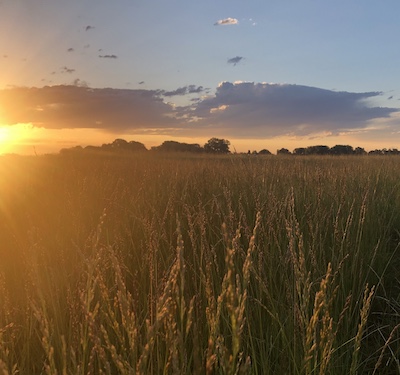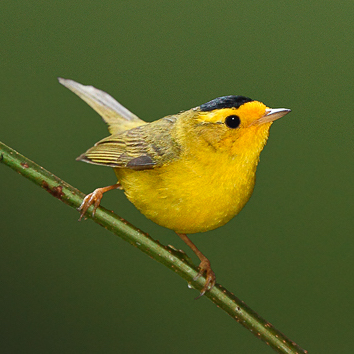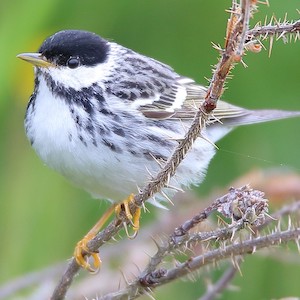Last fall, the journal Science published a shocking report about bird declines in North America which identified grassland birds as one of the hardest hit groups, with population declines of over 50% since 1970. These declines are primarily attributed to habitat loss, land use changes and climate change. The Grasshopper Sparrow is a prime example of these declines and an indicator species for grassland ecosystems; its populations have declined by almost 70% since 1970.
A new study in the journal Avian Conservation and Ecology used 6 years of data from 16 MAPS stations in the Platte River Valley in Nebraska to more closely examine how climate change and land management affected this iconic grassland species. Grasslands, and the species that live in them, are dependent on disturbance. Prior to European colonization, these included flooding, wildfires, grazing by bison and the excavations of prairie dogs. Now these processes are partially replaced by cattle grazing, prescribed fire and other land management practices.

A Grasshopper Sparrow caught at the North Meadow MAPS station in Nebraska. Photo by Nico Arcilla
The researchers found that wetter springs lead to declines in Grasshopper Sparrow abundance, and they hypothesize that more precipitation allows vegetation too tall and dense for this species, which prefers sparser vegetation with bare spots. (Though they note that in more arid grassland regions, higher precipitation may have a beneficial effect.) But they also found that prescribed burning could mitigate the effect of high precipitation by reducing the height and density of vegetation. Prescribed burning also appeared to boost productivity, or the number of young produced. However, during hotter breeding seasons, prescribed fire was less beneficial, presumably because denser vegetation (in the absence of burning) helped reduce heat stress on nestlings and fledglings.
Nevertheless, prescribed burning wasn't a cure-all in this study. "Management actions are often used to manipulate a landscape for the benefit of certain species, but climate, not management, seems to be the main driver of habitat suitability," says the study's lead author Alex Glass, a Ph.D. student in the Cooperative Wildlife Research Laboratory at Southern Illinois University. "This may not be particularly encouraging given the predicted patterns of climate change in the region (and around the world), but management actions can still be used to mitigate some of the negative impacts of climate change."
Climate change is expected to bring both more extreme precipitation events and more frequent droughts to the Great Plains. In addition, temperatures are predicted to rise in the region which could reduce the effectiveness of prescribed fire in mitigating vegetation overgrowth. Glass says Grasshopper Sparrows response to drought will vary in different regions of the Great Plains. "The proximity of our study site to the Platte River allows it to maintain an adequate level of soil moisture even in drier years so it will likely be able to maintain Grasshopper Sparrow populations better than many other areas across the Great Plains as drought frequency increases," he says, "Generally, a big effect of increased drought frequency on these sparrows may be a shift in habitat preference towards more mesic prairies and away from drier prairies, even though they historically prefer drier areas."

Sunrise on Nebraska's Great Plains. Photo by Nico Arcilla.
The insights from this study will help land managers and scientists conserve Grasshopper Sparrows in the face of these changing conditions, and this study would not have been possible without MAPS banding data. And the Great Plains could use more MAPS stations, currently there are relatively few stations in this region. "One of the four major migratory flyways in North America cuts through the Great Plains, so more MAPS stations there could give us a better picture of bird movements through this area," says Glass, "Even for MAPS studies with a site-specific focus (such as ours), more data on grassland birds in different parts of the Great Plains is critical for increasing our understanding of factors that can benefit or harm this imperiled group of birds."
Grasslands don't always get the recognition they deserve, but Glass is a fan. "Grassland systems are so cool, it's hard not to love any of the birds that associate with them." Still he has a special fondness for his study species. "I especially like Grasshopper Sparrows because they're a little more cryptic than other birds like Dickcissels or Meadowlarks or Bobolinks, so getting a good view of one is always pretty special."






